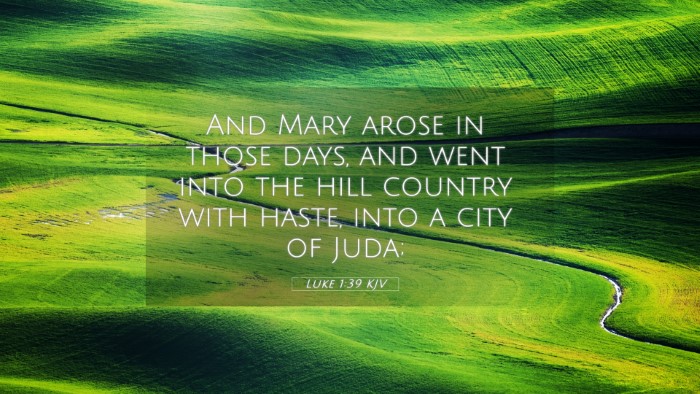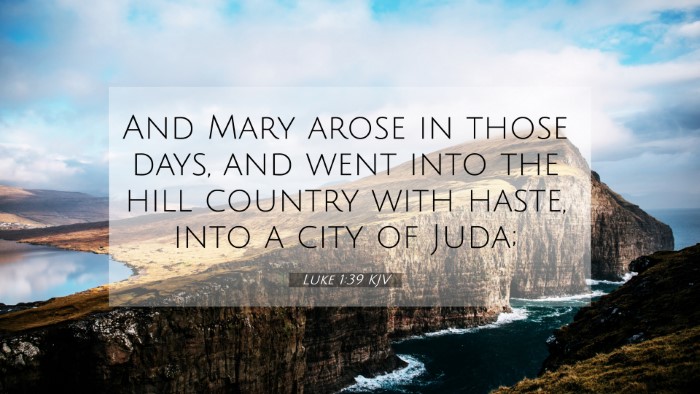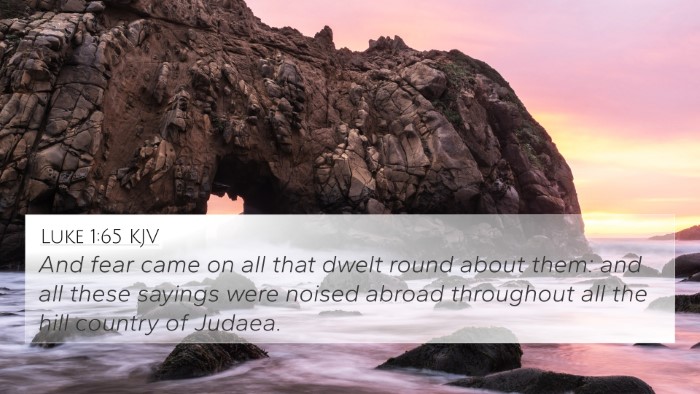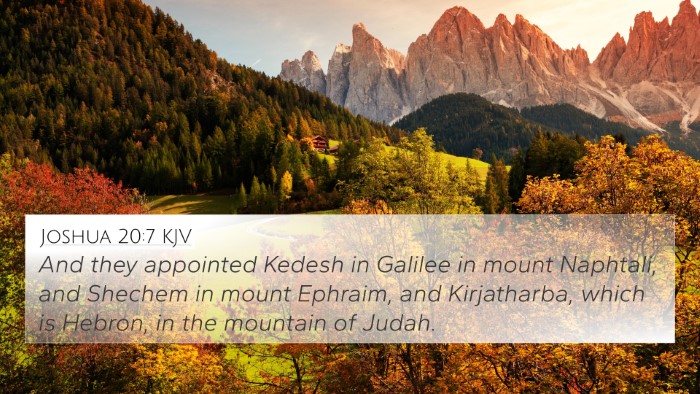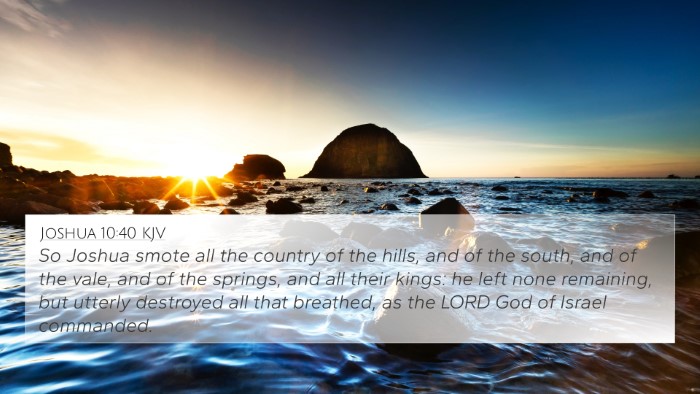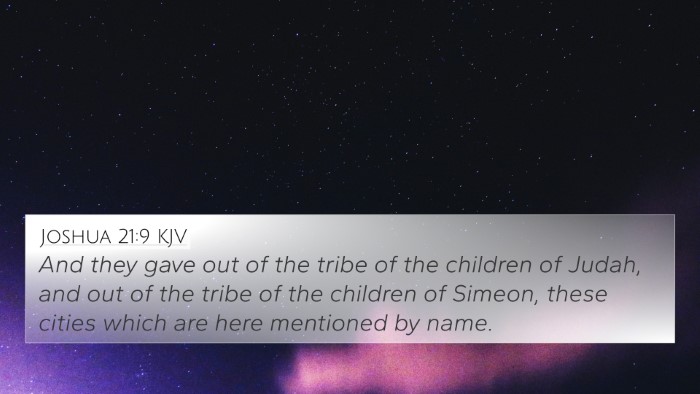Understanding Luke 1:39
Luke 1:39 states, "In those days Mary arose and went with haste into the hill country, to a town of Judah." This verse is a pivotal moment in the narrative of the Gospel of Luke, highlighting the journey of Mary following the Annunciation by the Angel Gabriel.
Summary of Meaning
The visit of Mary to Elizabeth is rich with significance, reflecting themes of spiritual obedience, the announcement of the Messiah, and the fostering of relationships through shared faith. This event sets the stage for the forthcoming miraculous birth of Jesus and serves as a connection point within Biblical narratives.
Commentary Insights
- Matthew Henry: Henry emphasizes the immediacy of Mary’s action. Her journey signifies her eagerness to serve and her desire to reinforce the miraculous news she had received.
- Albert Barnes: Barnes notes that Mary’s visit illustrates the importance of community in reinforcing faith. Elizabeth’s reception and affirmation play a crucial role in Mary’s understanding of her calling.
- Adam Clarke: Clarke highlights the geographical context by explaining the significance of the hill country of Judah. It reflects a connection back to Old Testament promise, emphasizing God's faithfulness in fulfilling His covenant.
Thematic Connections
This verse connects beautifully with several passages in both the Old and New Testaments, showcasing a rich tapestry of Biblical interconnections.
- 1. Isaiah 7:14: The prophecy of the virgin birth parallels Mary's divine selection.
- 2. Matthew 1:23: References the fulfillment of the prophecy regarding the virgin mother.
- 3. Luke 1:45: Elizabeth's blessing emphasizes the faith of Mary in her undertaking.
- 4. Genesis 17:19: The promise of descendants connects the covenant people with the coming Redeemer.
- 5. John 1:14: The Word made flesh is foreshadowed by Mary's acceptance.
- 6. Luke 2:4-7: This sets the stage for Jesus' later birth in Bethlehem.
- 7. 1 Samuel 2:1-10: Mary’s Magnificat recalls Hannah’s song, linking maternal recognition of God’s provision.
- 8. Hebrews 11:11: The faith of Abraham parallels the faith displayed by Mary in her response.
- 9. Galatians 4:4: Jesus being born of a woman references this moment in Mary’s life.
- 10. Revelation 12:1: There are connections drawn about the woman representing God's people bringing forth a child.
Cross-Referencing the Text
When engaging with Luke 1:39, we can employ various tools for Bible cross-referencing to enhance our understanding:
- Using a Bible concordance can help locate related verses.
- Employ a Bible cross-reference guide to discover thematic links.
- Utilize a cross-reference Bible study method to draw connections between different scriptures.
- Leverage Bible reference resources for deeper insights into contextual meanings.
- Explore Bible chain references for an interconnected narrative.
Practical Application
Understanding the context and implications of Luke 1:39 encourages believers to explore their own spiritual journeys:
- How does one respond to God's call in their lives?
- In what ways can community support spiritual growth and understanding?
- What steps can be taken to hasten towards one's divine purpose?
Conclusion
Luke 1:39 is not merely an account of a journey but a profound moment filled with relevance across the entire Biblical narrative. Through careful study and cross-referencing, one can discover the interconnectedness of the scriptures and the calling of believers to recognize the significance of God's message throughout time.
FAQs about Luke 1:39
- What verses are related to Luke 1:39? This verse connects closely with Isaiah 7:14, Matthew 1:23, and several others listed above.
- How do I find cross-references in the Bible? Utilizing resources like concordances and cross-reference guides can help significantly.
- Why is Mary's journey to Elizabeth important? It emphasizes her faith and the significance of shared belief in God’s promises.

